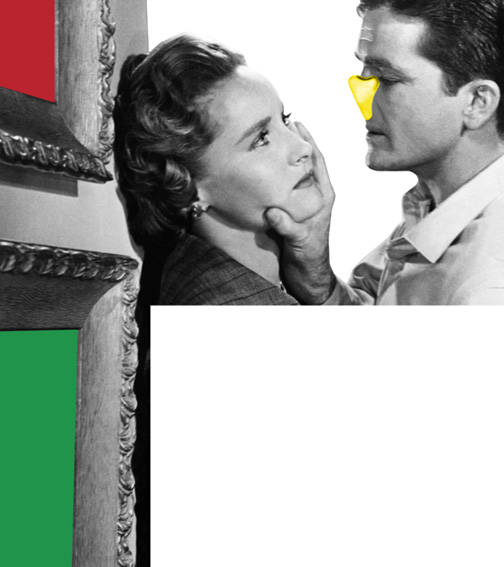Searching for the Ethnic Angle in John Baldessari’s Art
On a visit to a retrospective of this California artist, I consider traces of the Italian immigrant background in his work.
I recently had an opportunity to see a retrospective of John Baldessari’s work at San Francisco’s Palace of the Legion of Honor, and I was struck by the consistency of his style even over many decades and a variety of media. Baldessari’s particular blend of texture, color, light, and words comes through from his now-classic “I Will Not Make Anymore Boring Art” (1971) to his photogravures “Some Narrow Views: Either Tall or Wide (2004).


But I sensed something else, something more elusive than texture, something harder to describe than color, something more than irony. I sensed an ethnic side to Baldessari’s art; I became certain, in fact, that it was there to be found. My search may well be willfully essentialist, but I like to think of it as a postmodern musing on identity and culture, as Pasquale Verdicchio recently reminded me in a conversation, whereby migration comes to support rather than negate the possibility of a particular kind of ethnic positionality within art.
John Baldessari was born in 1931 in National City, California—just minutes away from downtown San Diego and the Mexico-U.S. border. His parents were both immigrants: his mother, a Dutchwoman who had come to the U.S. to work as a nurse and his father, an “ethnic” Italian, who came to the U.S. as an Austrian citizen (from the town of Albiano, today part of Italy, in the province of Trento) looking for work (more on this later).
We could argue that as a postmodern artist Baldessari produced an entire oeuvre—each piece a pastiche evoking hybrid identity, multiple perspectives, varying interpretations—that suggests a migrant’s experience as an outsider embracing a new world. Or, at the very least, we could say that his work is representative of the multicultural space of twentieth-century California. By themselves, such generalizations don’t get us too far.
Early in his career, Baldessari worked a lot in video, including making an 8-minute piece in 1974 called “The Italian Tape.” It’s a smart, though rather obvious, reflection on misunderstanding and language, with an over-the-top Italian romantic melody suggestively playing in the background. By itself, it cannot get me to where I want to be.


But I sensed something else, something more elusive than texture, something harder to describe than color, something more than irony. I sensed an ethnic side to Baldessari’s art; I became certain, in fact, that it was there to be found. My search may well be willfully essentialist, but I like to think of it as a postmodern musing on identity and culture, as Pasquale Verdicchio recently reminded me in a conversation, whereby migration comes to support rather than negate the possibility of a particular kind of ethnic positionality within art.
John Baldessari was born in 1931 in National City, California—just minutes away from downtown San Diego and the Mexico-U.S. border. His parents were both immigrants: his mother, a Dutchwoman who had come to the U.S. to work as a nurse and his father, an “ethnic” Italian, who came to the U.S. as an Austrian citizen (from the town of Albiano, today part of Italy, in the province of Trento) looking for work (more on this later).
We could argue that as a postmodern artist Baldessari produced an entire oeuvre—each piece a pastiche evoking hybrid identity, multiple perspectives, varying interpretations—that suggests a migrant’s experience as an outsider embracing a new world. Or, at the very least, we could say that his work is representative of the multicultural space of twentieth-century California. By themselves, such generalizations don’t get us too far.
Early in his career, Baldessari worked a lot in video, including making an 8-minute piece in 1974 called “The Italian Tape.” It’s a smart, though rather obvious, reflection on misunderstanding and language, with an over-the-top Italian romantic melody suggestively playing in the background. By itself, it cannot get me to where I want to be.


































i-Italy
Facebook
Google+
This work may not be reproduced, in whole or in part, without prior written permission.
Questo lavoro non può essere riprodotto, in tutto o in parte, senza permesso scritto.